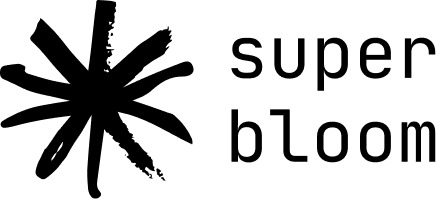Civic Tech Field Guide
Sharing knowledge and productively growing the fieldThe Tech > Civic data > Mapping > Civic maps - (149)
Civic maps collect and display data geographically to coordinate action, plot resources, or make an argument for change. This is our gallery of specific civic maps.
Showing 149 Results

RefAid
United Kingdom of Great Britain and Northern Ireland (the)The app seeks to ensure that migrants in Europe can access trusted services and accurate information in the palm of their hand - wherever they are.

Sakepedia and Code for SAKE
Japan (Nihon or Nippon)Crowdsourced project to collect data on sake and sake breweries from across Japan, integrates lost historical data, and utilizes digital technology to establish stronger connections between producers and consumers.

Disfactory
Taipei City, TaiwanCrowdsourced reporting on Illegal Factories on Farmland in Taiwan

BKK Follow Up
Bangkok, ThailandA 12-year retrospective of problems that have bothered Bangkok residents | สำรวจปัญหากวนใจชาว กทม.

Jonmat
SeoulVerified restaurant map based on the history of congressional donations (국회의원 후원금사용내역을 기반으로 한 검증된 맛집지도)

Herstory in East Asia
Republic of South Korea (Hanguk or Namhan)We want to show "herstory" in East Asia from local perspectives with a timeline and a map in our local languages, so that people from different regions of East Asia can learn more about the stories and rights women and LGBETQ+ have fought for.

FloodGen
New York CityA flood advocacy tool that uses generative AI to visualize photorealistic images of potential flood scenarios

Miami Affordability Project (MAP)
Miami, FLThe Miami Affordability Project (MAP) is an interactive online map providing data on the distribution of affordable housing, housing needs, demographic profiles, and environmental resiliency in greater Miami.

DOGE Cuts by City, State, and Congressional District
United States of America (the)Find out how the Trump administration’s DOGE cuts to grants and federal real estate are affecting your community.

Open Infrastructure Map is an open-source map of the world's infrastructure using data from OpenStreetMap.

The Impact Map
United States of America (the)The Impact Map provides timely data—as it becomes available—on policy, funding, and workforce changes and their localized effect. This tool is currently in beta and will continue evolving, so you may find areas that need updating.

FCC National Broadband Map
Washington, DCThis map displays where Internet services are available across the United States, as reported by Internet Service Providers (ISPs) to the FCC. The map will be updated continuously to improve its accuracy through a combination of FCC verification efforts, new data from Internet providers, updates to the location data, and—importantly—information from the public.

Mapping Civic Education in Europe
Bonn, GermanyOur Mapping Civic Education in Europe programme is a dynamic initiative continuously evolving by adding new countries to the first-ever pan-European virtual map of civic educators.
Congestion Pricing Tracker
Brown UniversityCurious whether Congestion Pricing is having an impact on commutes in NYC? Take a look to compare traffic data before and after Congestion Pricing

Civic Information Index
United States of America (the)The Civic Information Index uses data to map drivers of engaged, informed, equitable, and healthy communities nationwide.

The Upward Mobility Dashboard helps people understand key conditions affecting upward mobility from poverty and racial equity in communities.

Community Network Map
United States of America (the)This map shows municipal networks across the United States.

Healthsites.io establishes this data and the tools necessary to upload, manage and make the data easily accessible.

NIDOROUALMEwaAFE
Chad (Tchad)Using GPS mapping technology, Nidoroualmewaafe identifies areas that do not have access to safe drinking water and shares this information with local authorities and communities to inform decision-making.

This map...illustrates a [Congress] in a state of dysfunction, with growing dissatisfaction on the part of the public, waning trust in its ability perform, and -- most significantly -- large-scale disengagement from the system by the public.

UK Constituency Data Hex Maps
United Kingdom of Great Britain and Northern Ireland (the)This site maps data about UK constituencies on hex maps (cartograms). We have created several themes (economy, energy, environment, health, society, and transport) and have filled those with separate pages for each data aspect.

Give Food
United Kingdom of Great Britain and Northern Ireland (the)We're a UK charity that uses data to highlight local and structural food insecurity then provides tools to help alleviate it.

Cutting-edge map tools for historical research. Search, explore, and discover the history of your surroundings through historical maps.


FloodLight
PakistanA Code for Pakistan initiative to Crowdsource the flood-related data from the 2022 Floods in Pakistan.

Kidmapping is an information resource for parents, human rights activists, volunteers and activists. Here you can find information about all kinds of locations of deported children in Russia, Belarus or occupied regions of Ukraine.

There have been over 40 recent bans of the rainbow flag. The Gilbert Baker Foundation and the American Civil Liberties Union (ACLU) Are Fighting Back.

Through powerful personal narratives and comprehensive data, Global Press Journal shares the untold stories of 11 courageous, local journalists and activists across the globe.

Falling Fruit
Boulder, COFalling Fruit is a massive, collaborative map of the urban harvest.

Spatial Equity NYC
Massachusetts Institute of Technology (MIT)Spatial Equity NYC (SE), a tool developed by MIT’s Norman B. Leventhal Center for Advanced Urbanism (LCAU) in close collaboration with New York City-based nonprofit Transportation Alternatives (TA), visualizes mobility, environment, and health data.

Google MethaneSAT partnership
United States of America (the)Just like how we use AI to detect sidewalks, street signs and road names in satellite imagery to display helpful information in Google Maps, we’ll also use AI to identify oil and gas infrastructure, like oil storage containers, in our imagery. Then, we’ll combine it with EDF’s information about oil and gas infrastructure to locate where the emissions are coming from.

Atlas of Urban AI
Barcelona, SpainATLAS is a crowdsourced (map) repository of projects happening in cities involving the use of artificial intelligence systems.

Landlord Tech Watch
United States of America (the)Campaign website explaining landlord / proptech surveillance and what tenants can do to fight back

PlanIt
United Kingdom of Great Britain and Northern Ireland (the)UK PlanIt is a national aggregator for current and historical planning information.

Housing Courts Must Change! Map
New York City, NY, USAHousing Courts Must Change! (HCMC) is a statewide campaign launched by the Right to Counsel NYC Coalition in 2020 to transform the courts across New York State (NYS) from an “eviction machine” to a place that holds landlords accountable, upholds tenants’ rights, and enables tenants to remain in their homes.

Urban Analyst provides interactive maps of the properties of cities including of their transport systems and socio-demographic conditions, as well as statistical summaries of all cities.

NYC Street Map
New York City, NY, USANYC Street Map is an ongoing effort to digitize official street records, bring them together with other street information, and make them easily accessible to the public.

LupaMundi
Brazil (Brasil)O LupaMundi - Mapa das Legislações sobre Desinformação é um mapa interativo que apresenta as leis nacionais de combate à desinformação.

Water Data Explorer
LondonThe Water Data Explorer was developed by the British Geological Survey in collaboration with Imperial College London, The University of Oxford and UCL as part of the CAMELLIA project, and in partnership with a broad range of stakeholders. CAMELLIA has been funded by the UKRI's Natural Environment Research Council (NERC).

Be šešėlio
Lithuania (Lietuva)An opportunity for every conscious member of society to contribute to the elimination of the shadow economy.

igyszultem.hu
Hungary (Magyarország)Collaborative data collection map on informal payment in maternity care

Hotel Oligarch
Hungary (Magyarország)Know where you spend your money - mapping politically exposed hotel & restaurant owners


District 33 Street Tree Stewardship Map
Brooklyn, NYThis map will help us grow volunteer engagement at a neighborhood level and track our progress towards increasing tree stewardship across District 33 (in New York City)

Ruas do Género
PortoAn interactive data visualization project demonstrating the gender imbalance of street names in Porto

Die Plattform protestdata.eu beinhaltet Informationen zu Protestkampagnen und Protestaktionen von 1950 bis 2020, die in mehreren Forschungsprojekten gesammelt wurden.

מפת מחאות יום ד' 1.3.23
Israel (Jisra'el)"Here’s a real-time map of the hundreds of protests taking place across Israel as the pro-democracy movement there hits its ninth week of massive participation. An estimated 400,000 people turned out across the country last weekend; that’s five percent of its population" - Micah Sifry, The Connector


![Is your [UK] council fuelling the climate crisis?](https://s3.us-east-1.amazonaws.com/ctfg-airtable/screenshots/rec2opTaK3Yl8q3aE/httpsplatformlondonorgisyourcoun)


